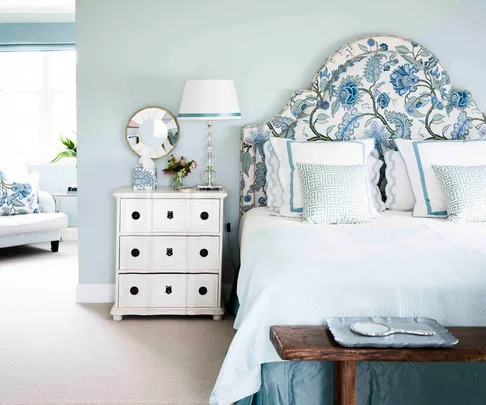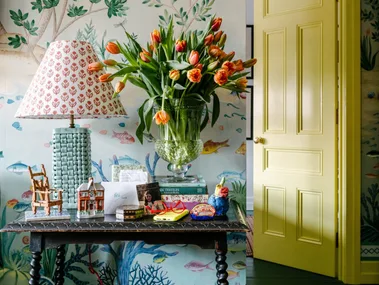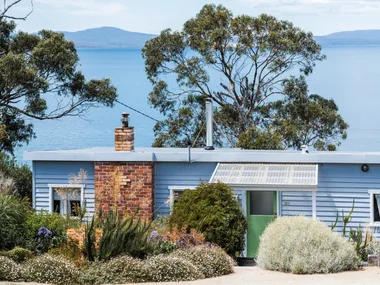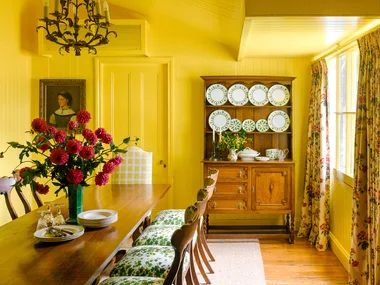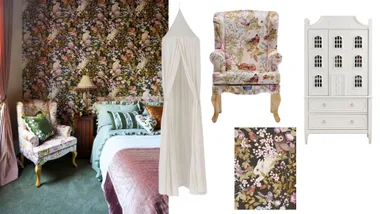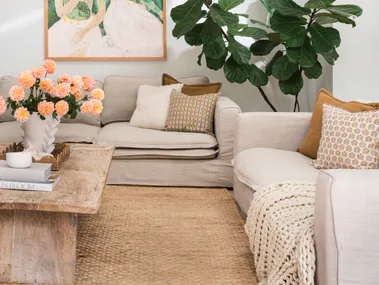For a simple and fun way to stamp your creative touch on your bedroom, upcycle your chest of drawers with paint. Reviving old furniture with paint makes for an economical update in any room and can take a tired piece from drab to fab. Your choice of colour and how you style it in the room has the potential to modernise the look, making it brand new again.
This is a great DIY project that can be easily tackled over a weekend. The key to success and a fast turnaround is the type of paint you use. Products like Annie Sloan’s chalk paint and Jolie Paint, which has a chalk finish, are designed for exactly this type of project, so you’ll get maximum enjoyment and beautiful results, or simply use paint you have around the house from other projects.
We spoke to the experts for their tips and tricks.
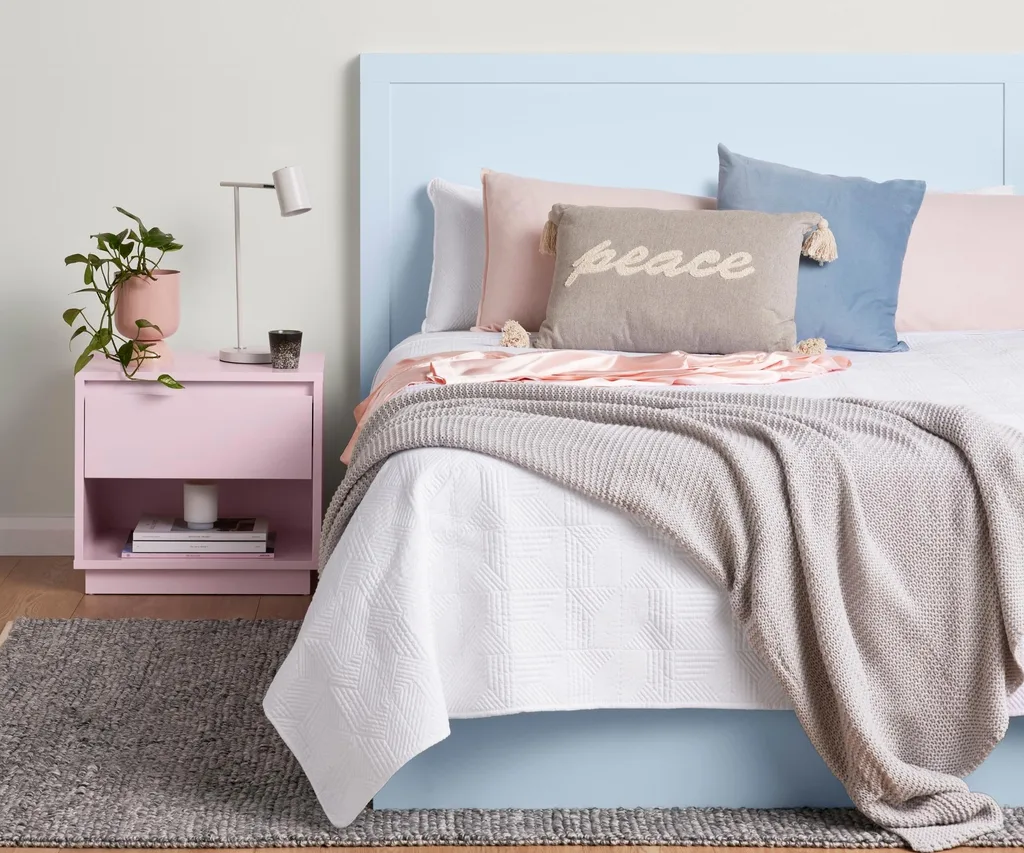
From meh to modern. Transforming an old piece of furniture is a great way to save money and help the environment. Bring found or heirloom pieces back to life with a lick of paint.
(Credit: Image supplied by British Paints)Painting furniture is so much easier than you might think and a chest of drawers or bedside table is the perfect size to cut your teeth on if you’ve never done it before. “People are often surprised by how easy it is to actually transform a piece of furniture,” says Avalon White of Pepperwhites, who sells the Jolie range. “I think a lot of people have a stigma about painting, that it’s always going to be hard and you need lots of equipment, you have to spend days sanding and it really isn’t the case – you can actually finish a project in an afternoon.”
If you’ve been staring at an old bedside table or have chanced upon one on Gumtree, often a lick of paint is all that’s needed to modernise it and bring it in line with other furniture and decor in your bedroom. “What we often say to people is that if the piece has good bones – if you like the shape of it and it’s still in good condition – really it’s just a cosmetic change so a coat of paint can completely uplift it,” says Avalon, who’s favourite colours are worlds away from artsy-craftsy into sophisticated tones of Jolie’s Swedish Grey, Palace White and the true black of Noir.

For a fresh update, give a basic wooden chest of drawers a little facelift with paint.
(Credit: Image courtesy of Pepperwhites)Do I need to sand the furniture before I paint it?
The beauty of these furniture paints is there is little to no preparation required. “We always recommend a very light sand if you can be bothered,” says Avalon. “It just gives you a longer-lasting finish. “But you don’t really need too much sanding – just smooth any uneven areas.”
“Essentially, you just need a surface that is clean, free of oils and dust and if it is a piece that’s been painted before and there’s any sort of paint stripper or marks, you can sand those too, as they will show up – even if you go over them with a new paint finish,” Avalon advises.
“Just touch those up with some sandpaper but it’s not a matter of having to sand everything right back and spend days doing it. It’s really just very light prep work to get it ready for painting.”
If using house paint, give your piece a good sand, then wipe down the surface with a damp cloth and apply an undercoat like British Paints Prep 4in1 Water Based.
EQUIPMENT NEEDED TO PAINT FURNITURE
Fine sanding pad or paper
Paint brushes – flat brush, or use speciality Jolie or Annie Sloan paint brushes
Prep coat – if using house paint and your piece has been previously painted
Paint in your choice of colour – often small tester or project pots will do the job
Clear wax to finish – if using chalk finish paint
Specialty wax brushes or a clean, soft cloth
How to paint a chest of drawers
If using chalk-finish paint, begin by painting the whole piece in your chosen colour using several different directions to create subtle brushstrokes and soft texture. For conventional paint, smooth strokes with a flat brush yield the best result.
The number of coats needed will depend on your choice of paint and colour. Annie Sloan’s paints tend to be heavier and go on thicker, whereas Jolie Paint is lighter weight. Both can be watered down slightly for easier application (particularly in warm weather) to create a lighter coverage, followed by an extra coat.
If you have applied an undercoat, give your piece of furniture another light sand before adding your topcoat in something like British Paints H20 Enamel Gloss which is water-based but hardwearing for high-traffic furniture use such as a chest of drawers or bedside table.
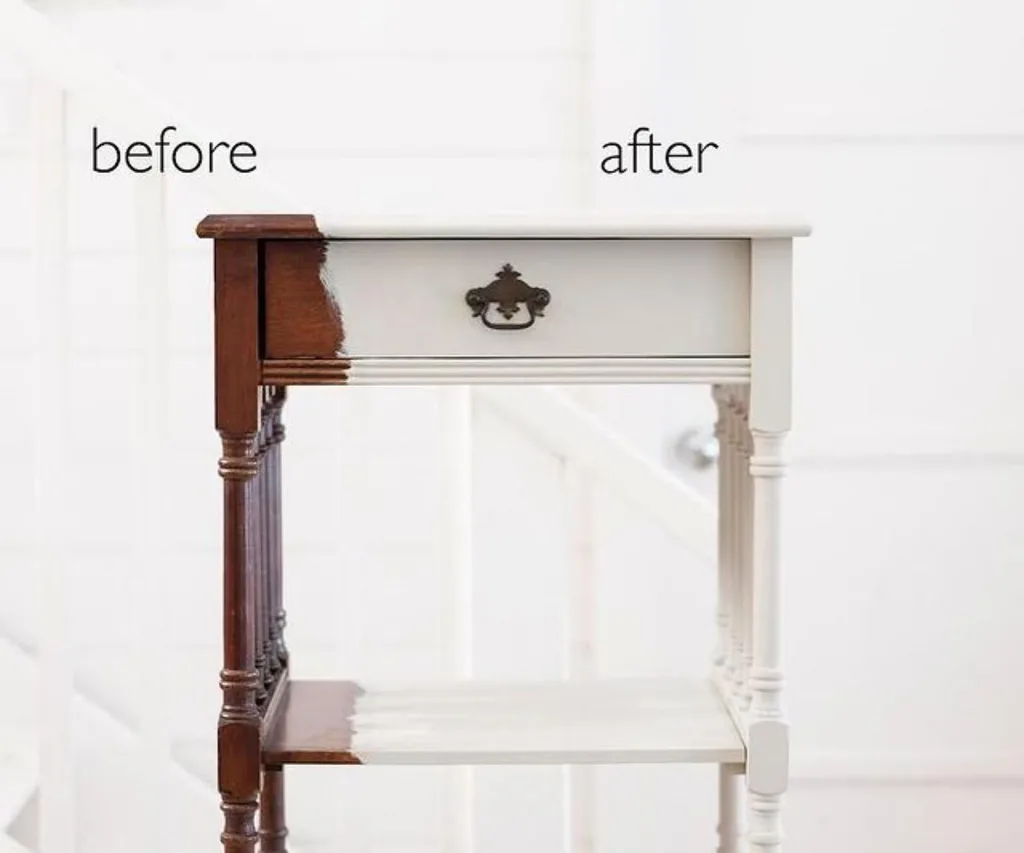
With little-to-no prep required, a small chest of drawers can be revamped in an afternoon!
(Credit: Image supplied by Pepperwhites)One of the best features of the chalk finish paints is that drying time is a mere 35-40 minutes, so you don’t even have time to get bored between coats! “When freshly painted, your finish will feel quite soft,” says the Pepperwhites FAQ page. “This is the best time to manipulate it with techniques such as distressing, applying Finishing Wax, etc. As the paint cures (a process which takes approximately two weeks), it becomes much harder and more difficult to manipulate.”
A protective coating for your painted furniture
If you’re using enamel gloss paint, you’ll need to add two coats over the prep coat but wait until the first is fully dry before adding the second. No top coat is needed – all that’s left to do is reattach your hardware and your freshly painted piece is ready to enjoy!
With chalk finish paints, once you are satisfied with the coverage and the paint is dry, use a soft cloth or wax brush to apply clear wax to the painted surface for a silky, matte finish. Specialty wax brushes are a great investment and make wax application super easy, however, a lint-free cloth is a great alternative.

For a richer finish, use a tinted wax to highlight the wood grain.
(Credit: Image courtesy of Pepperwhites)You can also apply a coloured wax on top of the clear wax to pick up the texture of the timber and add an extra dimension. “Tint it with brown wax or black wax to make it look a bit industrial or more country,” says Avalon. Always use clear wax before using the coloured waxes.
Work the wax into the surface and wipe away any excess, then leave to cure. Light use of the piece is recommended for at least two weeks while the wax finish cures completely.
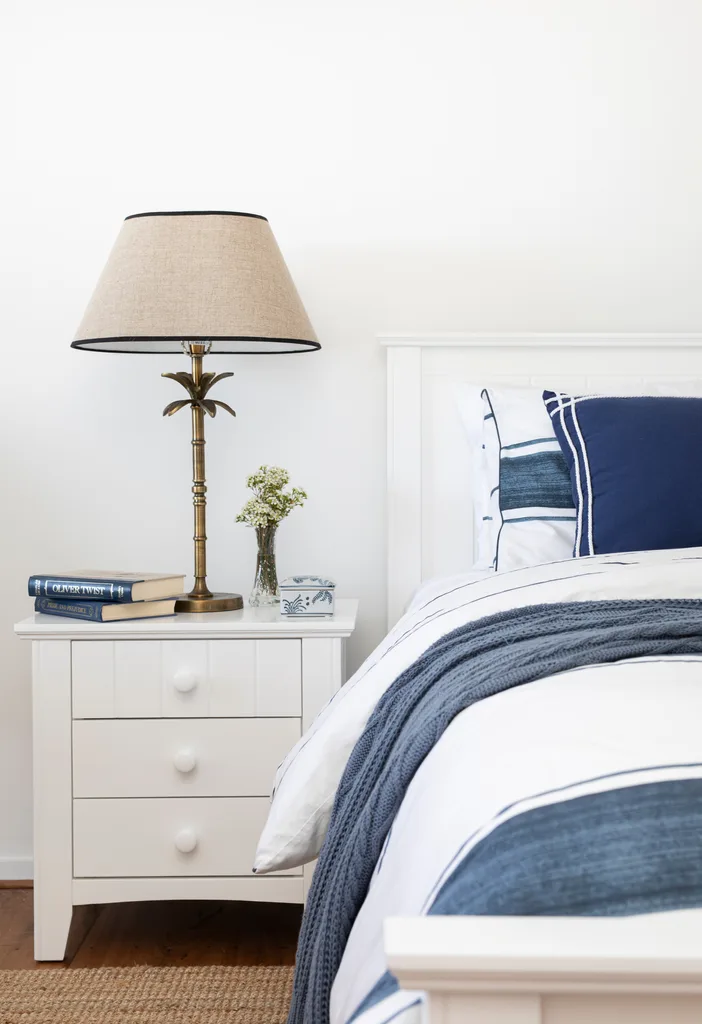
Match old and new pieces together with a coat of fresh white, so your old chest of drawers can join the style party!
(Credit: Photography: Elouise van Riet-Gray / Stylist: Lana Caves)